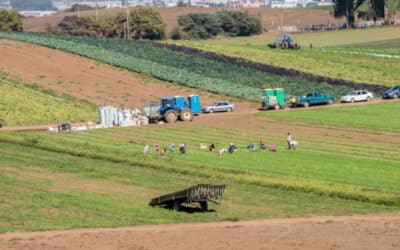A new study published in Nature Water used satellite data spanning 38 years to examine how groundwater-dependent ecosystems (such as wetlands, meadows, and springs) in California respond to fluctuations in groundwater levels. The research can help shed light on how water management practices can best account for ecosystem needs in addition to those of human society.
New study shows robust increases in atmospheric thirst across much of U.S. during past 40 years
A new study showed substantial increases in atmospheric thirst across much of the Western U.S. during the past 40 years, with the largest and most robust increases in an area centered around the Rio Grande and Lower Colorado rivers.
New DRI Internship Program Focuses on Mentorship for Inclusion in STEM
Fourteen students from Nevada’s two-year colleges are building career skills in exciting new directions. The students are conducting hands-on research alongside DRI scientists in Reno and Las Vegas through DRI’s Research Immersion Internship Program.
New donor-powered research underway to address climate adaptation, water resources, and more
The DRI Foundation has just awarded the next round of seed grants to six teams of researchers through the Innovation Research Program (IRP). The IRP provides the start-up funding DRI scientists need to test new ideas and produce initial data, which will help them...
Q&A with AGU presenter Christine Albano
Christine Albano is a hydrologist and graduate student pursuing her Ph.D. She'll be attending AGU for the first time this year. DRI: In a couple of sentences, what is the ‘plain English’ summary of what you are presenting at AGU? Christine Albano: Through our...




